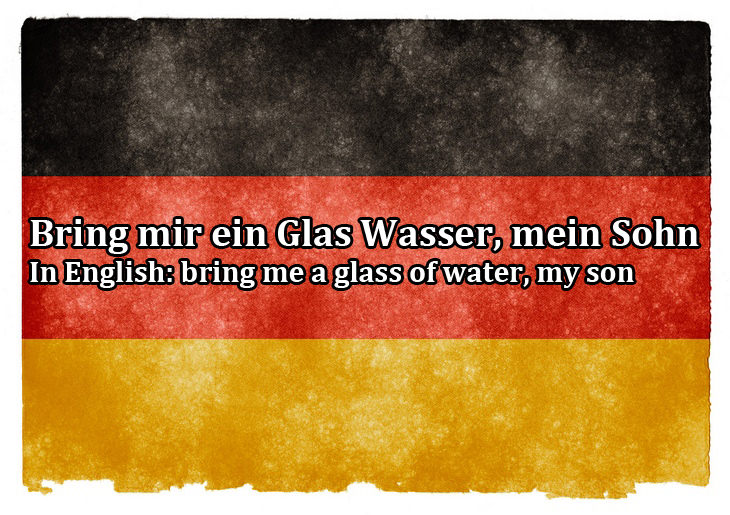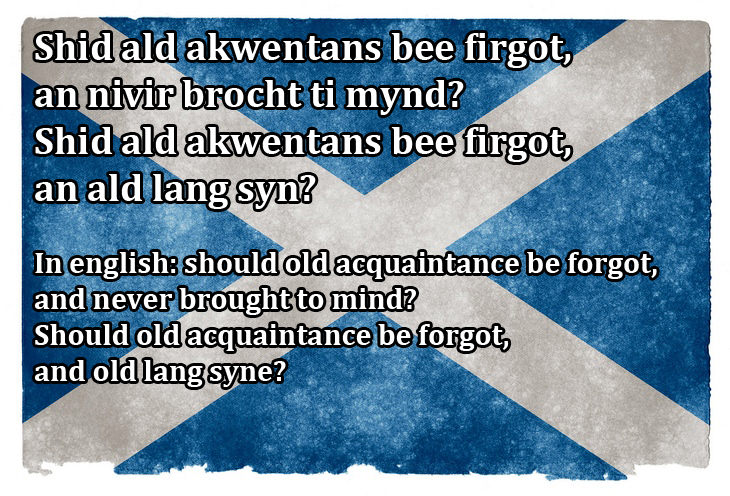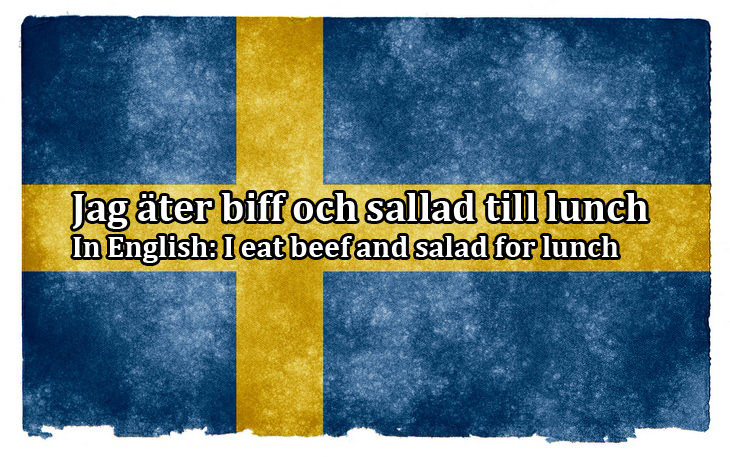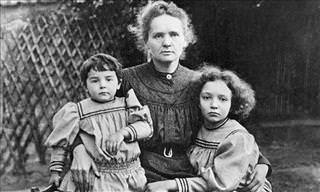





Image source: Nicolas Raymond

Quiz: Can You Solve This Grammar Challenge?
Can you solve this 15 question English grammar quiz? if so, you are a grammar god!

Only Grammar Geniuses Will Be Able to Ace This Quiz!
This quiz will test you on the correct use of apostrophes in sentences. Do you think you'd manage to get them all correct?

Hilarious: English is a Seriously ODD Language...
If you thought English is a clear-cut and tidy language, you better read this.

Test Yourself: Which English Word Should You Use?
Sheep or sheeps? Definitely or definately? Do YOU know which English word to use?

When GH Says F: Why Does This Occur?
We're meeting up on the corner of history and linguistics to learn why GH is pronounced as F.

Think You Know How to Spell? It's Time to Find Out!
Do you think you're smarter than the average 4th-grader? If so, then give this English spelling test a shot!
 2:59
2:59
Rare History: Watch as Helen Keller "Speaks"!
Long before Steven Hawking astounded us with his resolve in the face of adversity, there was a woman who was shocked the world with her ability to have a life, gain a degree and even become an author, political activist, and lecturer.
 14:05
14:05
What Was 1900 Like? See it All Here in Color!
Carefully restored and colorized, these scenes blend history with a fresh perspective.

Time Changes Everything... As Seen in These Photos
These incredible photos show just how powerful time is.

Every Common Phrase Started Somehow...
The origins of these common phrases are fascinating.
 20:10
20:10
The Incredible Story Behind the Taum Sauk Dam Failure
It’s a story of failure, recovery, and hard lessons in the power of infrastructure—and the price of overlooking risk.

12 Fascinating Facts About World War II
These snippets peel back the textbook narrative to reveal humanity, ingenuity, and sheer absurdity beneath the battles.

The Great Mothers of History: 12 Famous Mothers!
History is laden with truly heroic moms, but we've gone to the trouble of picking 12 of the most heroic of all for you. Here are 12 of the best moms in history.

Inspire Friends and Loved Ones With These Great Greetings
Show your friends that you're thinking of them today with an inspiring greeting!

14 Obsolete English Terms We Wish Were Brought Back!
Over the centuries, so many eloquent and useful English words fell out of use. We wish these 14 clever (but sadly obsolete) terms were used more often.
 13:02
13:02
Were You Aware of These English Language Mistakes?
Learn how to avoid some common English language mistakes by understanding some little-known truths.

These So-Called Facts Have Been Officially Disproved!
These beliefs we were taught as concrete facts were disproved and are no longer true!
 45:39
45:39
These 5 Extraordinary People Really Are Superhumans!
This gripping documentary tells the stories of five exceptionally talented people with unique gifts.

These Alternate Versions of History Will Blow Your Mind...
Our world is full of 'what if?' questions, since we just love to speculate about how things could have turned out differently. Here are 10 of the best!

Turns Out There’s a Chart for Literally Every Little Thing
Learn something useful and fun with these helpful charts!

Honey vs. Maple Syrup – Which Sweetener Should I Use?
There are plenty of key differences between honey and maple syrup than you probably realized.

Urban Tales: Eight Stories That Shaped Our Cultures
In this article, we explore some of the most intriguing urban legends and folklore from various continents.

The Encyclopedia Won’t Tell You These Unique Facts
Here are 12 unique and curious facts about the world that will definitely surprise you.

5 Strange Lesser Known Stories About the British Monarchy
Some of these lesser-known rumors about the British Royal Family are funny, some are mysterious, and some are just plain odd...

This Man Interviewed 500 Rich People and Got These Tips!
Hill interviewed over 500 self-made millionaires over 20 years and these are his financial tips.

Learn the Secrets of the World's Most Persuasive Speakers
Persuasion is undoubtedly an art form, but how do you become recognized around the world for it? Learn 11 secrets of the most persuasive speakers alive.
 23:18
23:18
Will the Alcatraz Mystery Ever Be Solved?
What happened to the three prisoners who managed to escape from Alcatraz prison? All is revealed in this intriguing documentary.

115 Incredible Facts You Never Knew About Cats!
Cats are the most popular animal on the internet by far, so we made this extensive list of cat facts that will turn you into a feline expert!
 3:50
3:50
Why Did Hitler Want to Destroy This New York Basement?
Deep below the halls of New York's Grand Central Terminal theres a secret basement that could have changed the outcome of the second world war...
 6:15
6:15
John Williams Conducts the Theme Song from “Jurassic Park”
Watch legendary composer enthrall the audience as he conducts the famous theme music from “Jurassic Park”.

15 Super-Interesting Facts that Will Surprise You
These surprising historical facts will supply a meaty meal for anecdote and history lovers alike. It's so much fun to learn those small details about days gone by.
 11:02
11:02
The Incredible History of China's Terracotta Army
China's first emperor, Qin Shi Huang Di, had built a platoon of clay soldiers to accompany him in the afterlife. Find out more about this unusual piece of history.
 53:21
53:21
The Wars of the Roses: England's Bloody Civil War
This epic civil war is one of the main influences for Game of Thrones and other epic stories. Learn all about it now.

The Streets of Rome: 15 Illustrations of Daily Life
Here are 15 artistic depictions that offer a glimpse into what life was like in ancient Rome.

You’ve Probably Been Mistaking These Foods for Each Other
In this article, we will look at a few food pairs that have commonly confused all of us.and help you tell the difference between them.

11 Legendary Military Rulers of the Ancient Past
The annals of history are rich with leaders who earned great renown for their courage and skill in battle. These illustrious kings and generals have won eternal renown due to their courage and brilliance.
 2:59
2:59
A Fistful of Dollars: Live and Unforgettable Performance
Watch The Danish National Symphony Orchestra perform Ennio Morricone’s classic song "A Fistful of Dollars."

These Inventors Absolutely Hate Their Creations
These 7 inventions became world famous and even world changing... yet their inventors deeply regret them.
 12:19
12:19
How Roman Engineers Shaped the World We Know Today
These engineering marvels made Rome an enduring symbol of innovation and ambition.

7 of the Most Famous Weddings of the 20th Century
Here’s a closer look at the most famous weddings of the century and the compelling stories behind them.

These Museum Items Give Us a Glimpse of a Fascinating Past
In these pictures, you will get to see some fascinating ancient artifacts that are well-preserved in museums.

This Dog Saved Her Owner From Certain Death!
This dog proved her love for her owner in an amazing way: she used her incredible sixth sense to help save the woman's life.

22 ODD Facts You Didn’t Know—and Still Might Not Believe
This collection digs up the most peculiar truths that slipped through the cracks of common knowledge.
 7:14
7:14
Franca Viola: The Woman Who Had the Courage to Say "No"
The inspiring story of an Italian woman who, in the 1960s, had the courage to stand up to tradition and say no.

13 Honest Charts & Graphs That Describe Our Lives Too Well
Artist Irina Blok's illustrated charts and graphs about everyday life are so relatable.

10 Battles in History Most People Don't Know About
The world would have been very different had it not been for these battles.

12 Bizarre Events You Won’t Believe Actually Happened
Check out these 12 unbelievable facts that will leave you amazed.
To enable your Ad-Free Subscription, please fill the fields below
Your subscription was successful, now you can enjoy an ad-free experience!! Note: To make sure you get no ads, please make sure to log in to your account. If you are logged in already, then refresh the page. The subscription can be cancelled at any time.


